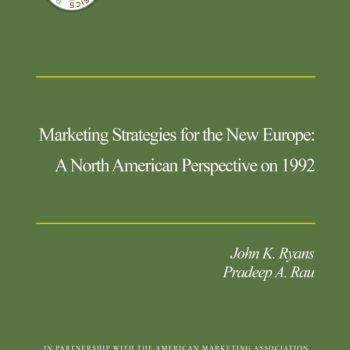Marketing Strategy Category
Marketing Keys to Profits in the 1960’s
Marketing Keys to Profits in the 1960’s was edited by Wenzil K. Dolva. This work is a compilation of papers presented at the Cleveland National Conference on marketing in 1959. The papers and discussions not only reflect the thinking of the times, but they record the state of marketing knowledge at the end of 1950s. Divided in seven parts, the papers are consolidated on the basis of Dolva’s comments, intellectuals’ expertise, marketing management, the consumer, industrial marketing, marketing research, and special interests such as bank marketing, insurance marketing, and credit cards.









